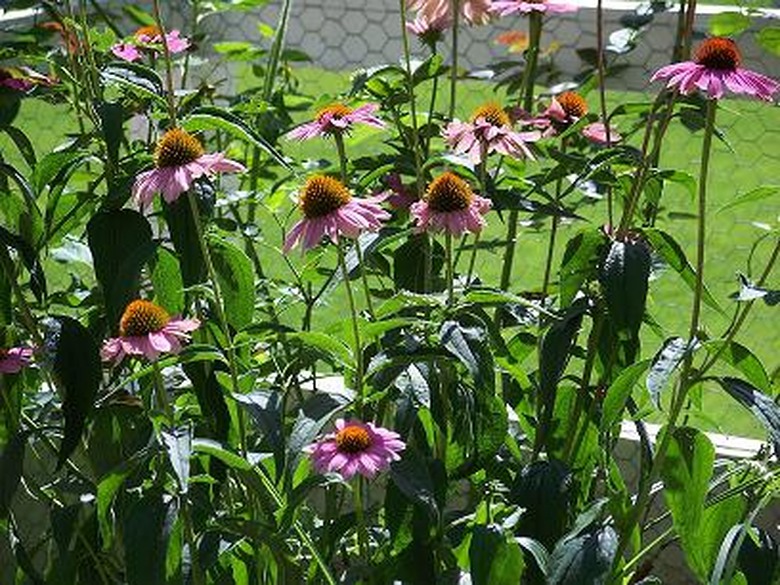How To Prune Eastern Purple Coneflower
Purple coneflowers (Echinacea purpurea) are grown both for their lovely flowers and for their usefulness as the source of medicinal echinacea. They are perennials that flourish in most parts of the world. Prune coneflowers correctly to make them more attractive in the flower garden and more productive in the herb bed.
Step 1
Prune purple coneflowers for medicinal use. This can be done several times throughout the growing season. Use the cuttings fresh, or dry them and store them to make healthful tea. Make the pruning cut on the flower stem just above the lowest green leaf. Harvest for medicinal use right before the flower buds open.
- Purple coneflowers (Echinacea purpurea) are grown both for their lovely flowers and for their usefulness as the source of medicinal echinacea.
- Make the pruning cut on the flower stem just above the lowest green leaf.
There may be some dead, brown leaves at the bottom of the plant; this is normal. Make your harvest pruning cuts above the brown areas, and then prune away the dead parts.
Step 2
Prune purple coneflowers to deadhead them. Remove spent blossoms as they die back. Clip the stem back to the next branch that carries a flower or bud. If there are no more buds, prune as close to the ground as you can.
More new shoots with flower buds will grow from the crown (base) of the coneflower plant. Consistent deadheading will keep a supply of new flowers blooming until frost.
- There may be some dead, brown leaves at the bottom of the plant; this is normal.
- Consistent deadheading will keep a supply of new flowers blooming until frost.
Step 3
Keep your purple coneflowers pruned to improve the conformation of the plant. Purple coneflowers can become tall and leggy as summer advances, which makes them susceptible to damage from wind or from simply toppling over. Periodic trimming encourages the plants to expend energy on root growth. This helps the plant spread, and it also increases the root mass, which can be harvested in part for medicinal use.
Step 4
Prune a final time for the year after the first killing frost. Cut back all stems and foliage to the crown. Remove all dead plant debris to lessen the risk of plant disease. Layer plenty of mulch over the coneflower plant, about 3 to 4 inches thick, for good winter protection.
- Keep your purple coneflowers pruned to improve the conformation of the plant.
- Purple coneflowers can become tall and leggy as summer advances, which makes them susceptible to damage from wind or from simply toppling over.
The dried flower heads that have gone to seed can be separated during this final pruning. Scatter the seeds on the ground in the fall, and they will come up very early in the spring. You can also save the seed for spring planting. They can be planted in the spring as early as lettuce or peas.
Tip
Some gardeners leave the last purple coneflower seedheads of the season for the birds to eat over the winter. Prune these back in early spring before new green growth appears. Use sharp pruners for a clean cut. Coneflower stems are rather tough and woody.
